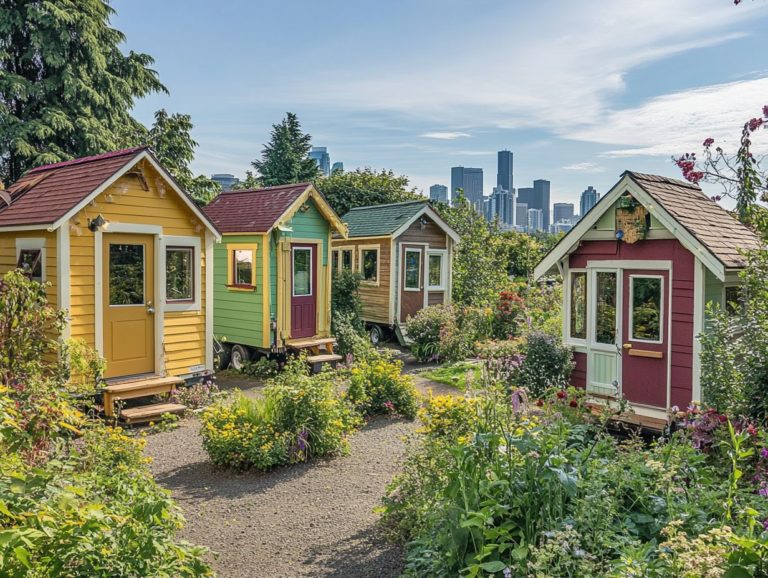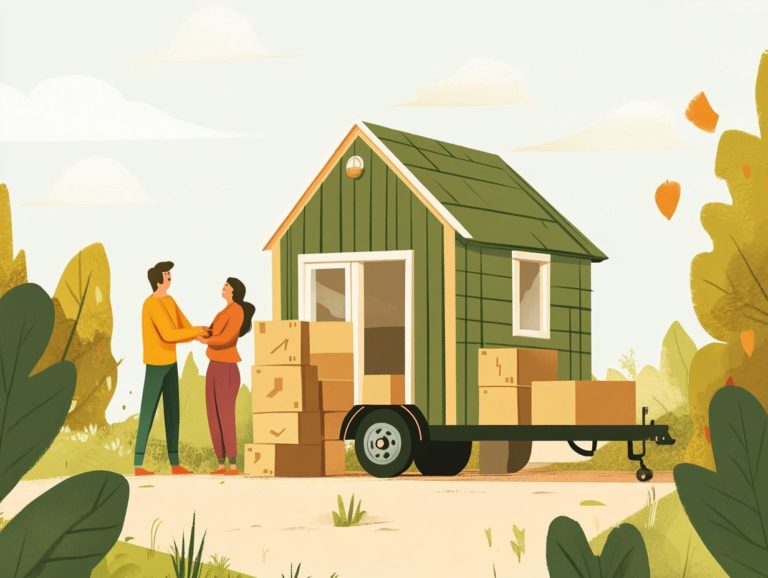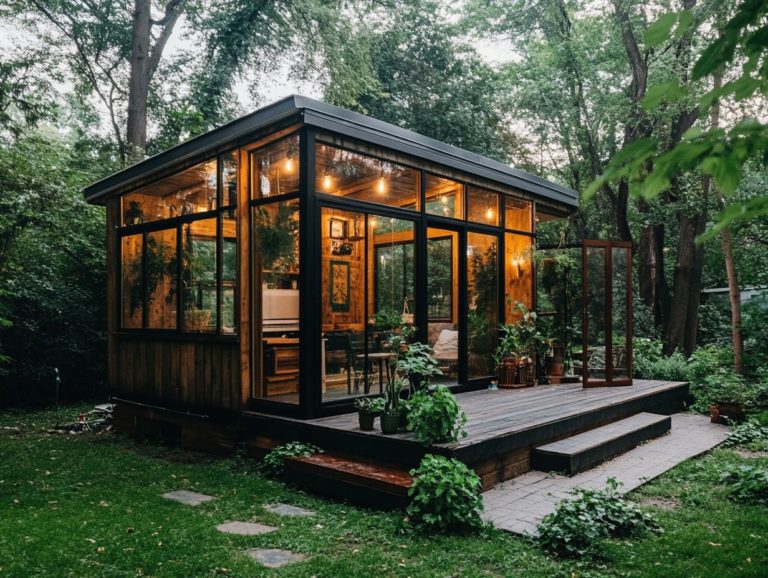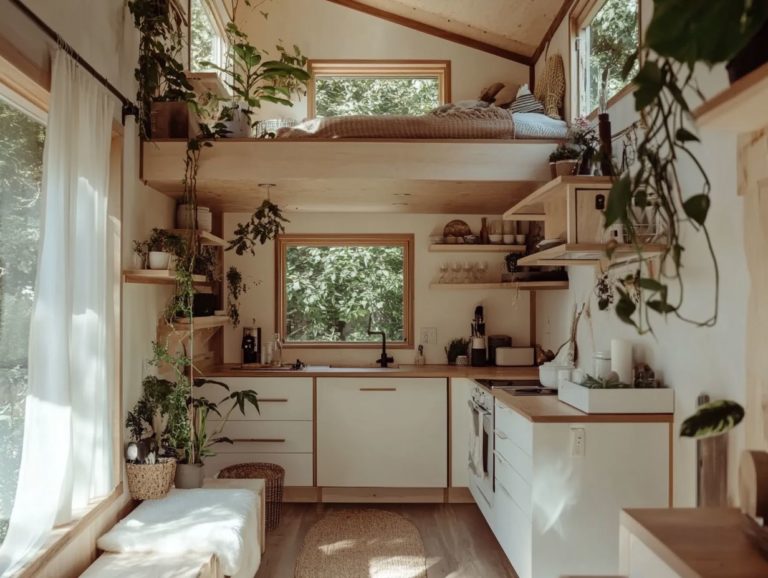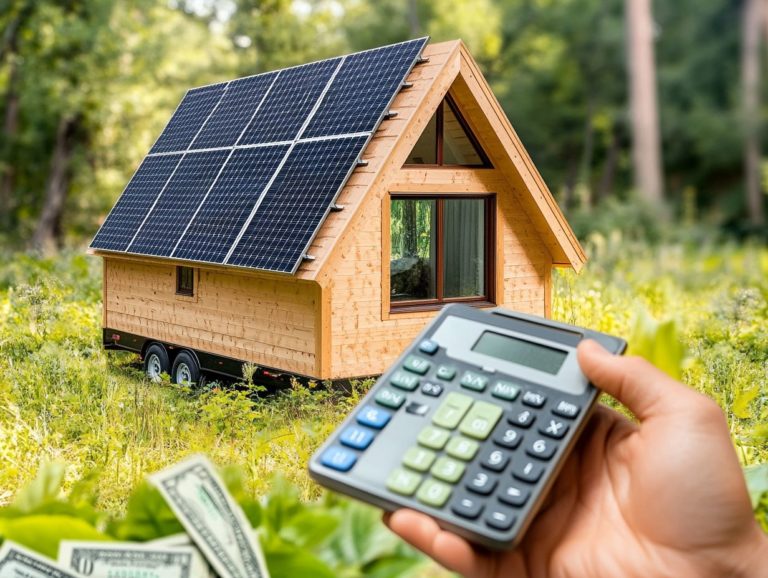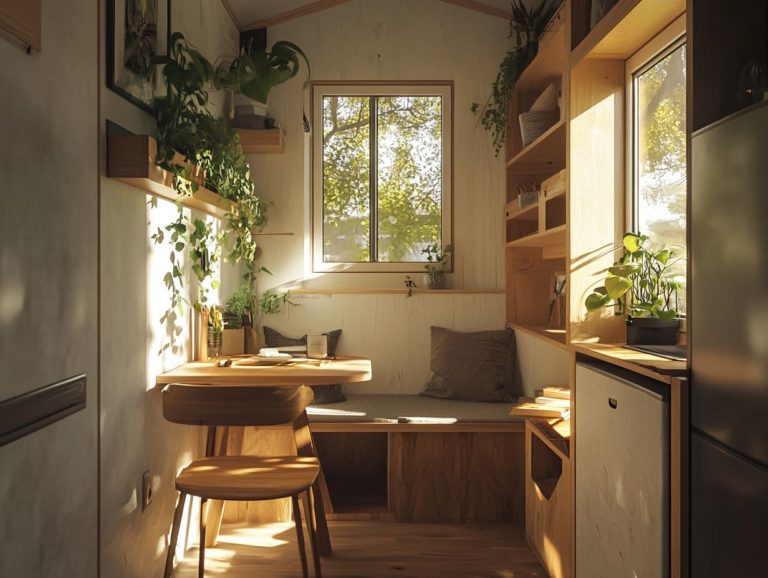Tiny House Living: Lessons Learned
Curious about the tiny house movement? This article explores tiny house living, highlighting the many benefits and challenges of downsizing your space.
Enjoy financial savings and a smaller environmental footprint. Learn how to adapt to smaller quarters and navigate legal hurdles.
Discover insights from tiny house enthusiasts, including creative storage solutions and design tips. Could tiny house living be your ideal lifestyle? Read on to explore the possibilities!
Contents [hide]
Key Takeaways:
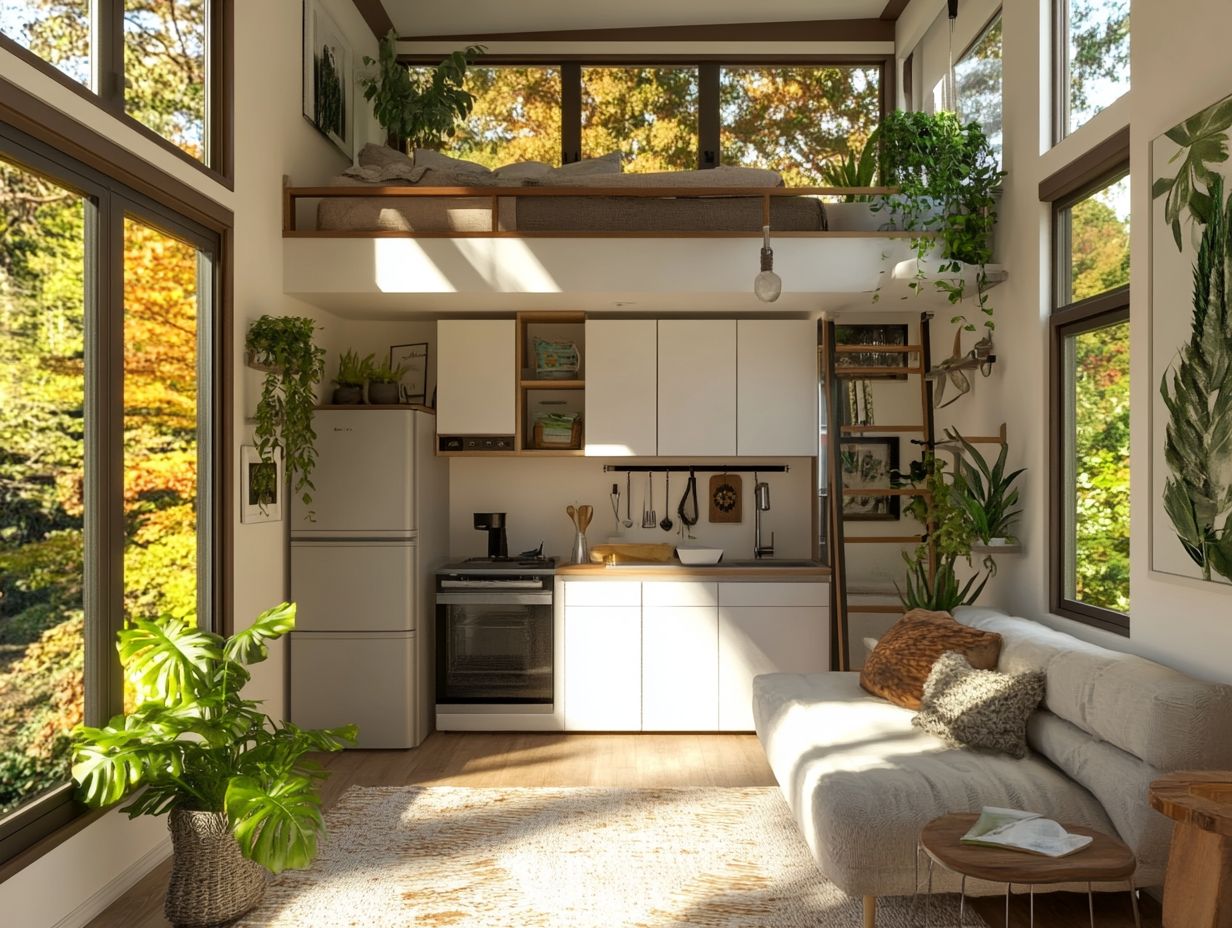
- Simplify your life by embracing tiny house living.
- Get creative with storage to maximize your limited space.
- Research thoroughly to avoid zoning issues when considering a tiny house.
What is a Tiny House?
A tiny house is a small living space, usually between 350 and 600 square feet. This approach promotes living with less while focusing on sustainable practices.
Living tiny means not just a minimalist lifestyle; it s about building community and intentional homeownership. Every inch of space is designed for functionality and emotional comfort.
These homes often feature innovative design elements, like multifunctional furniture. Imagine them nestled in beautiful locations like Catskill Creek, symbolizing a cultural shift towards simplicity and self-sufficiency.
Living small can shrink your ecological footprint and foster deeper connections with neighbors. This shared lifestyle transforms the idea of home into a nurturing environment for personal and communal growth.
Benefits of Tiny House Living
Embracing tiny house living offers many benefits, from financial savings to environmental sustainability. It allows you to simplify and downsize your life.
This lifestyle promotes sustainable practices and unique vacation opportunities. Picture cozy getaways in charming tiny house resorts with fun activities like Goat Yoga to make every moment unforgettable.
Financial and Environmental Advantages
Financial and environmental benefits are key aspects of tiny house living. As you downsize and embrace minimalism, you ll likely see a drop in living costs, leading to a more organized life.
The small size of tiny houses reduces utility bills and your environmental footprint, aligning with eco-friendly values. Lower mortgage payments mean more disposable income for experiences rather than material things.
Many tiny houses use energy-efficient materials and appliances, ensuring a cozy lifestyle without high energy costs. This approach encourages decluttering, focusing on what really matters: community, creativity, and personal growth. To navigate this lifestyle effectively, be sure to check out tiny house living: your legal checklist.
Challenges of Tiny House Living
Embracing tiny house living brings a wealth of benefits. However, it also introduces unique challenges you’ll discover along the way. Adjusting to a smaller space requires a shift in mindset. Understanding the legal and zoning issues (rules about how land can be used) can significantly impact your living experience.
These challenges can challenge the community spirit of tiny living, compelling you to find innovative solutions to flourish in close quarters. You might create a shared outdoor space or participate in local initiatives like CASS Community Social Services.
Adjusting to a Smaller Space
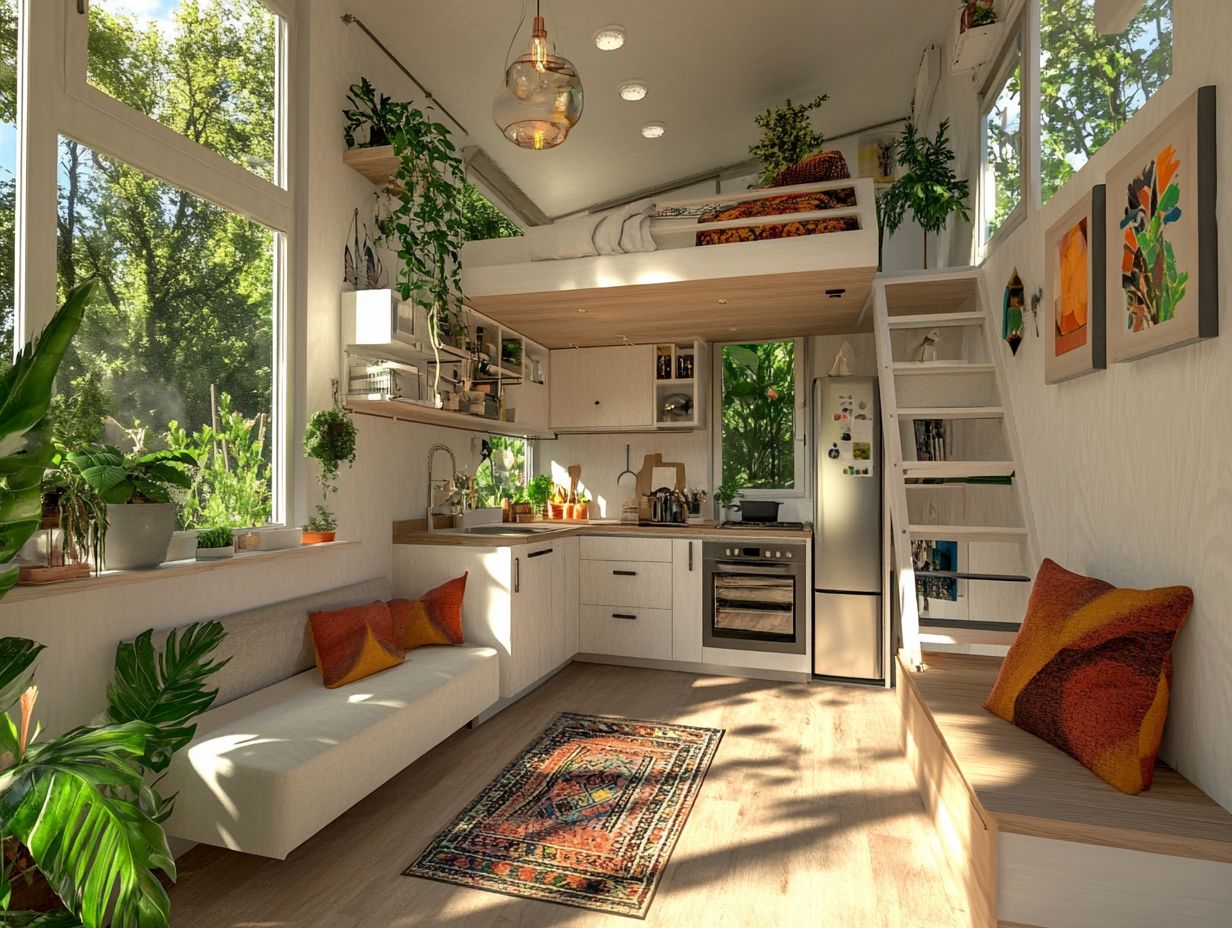
Adjusting to the snug space of a tiny house might feel a bit daunting at first. But with effective space management and organization, you can transform your experience into one that boosts your emotional energy and enhances your overall well-being.
By embracing minimalism and intentionality, you can create a home that feels both open and inviting, even within limited square footage. One of your key strategies should be maximizing vertical space. This allows for additional storage without cluttering the floor and opens up opportunities for personal expression through decorative items on wall-mounted shelves and hooks.
Using furniture that serves multiple purposes like foldable tables or sofa beds can further optimize your space. Techniques such as basket sorting and labeling can instill a sense of order and calm, making your home feel less restrictive. These approaches foster a liberating atmosphere, enriching your daily life by allowing creativity and comfort to flourish in every nook of your tiny abode.
Legal and Zoning Issues
Legal and zoning issues can pose significant hurdles for you as an aspiring tiny house owner. Regulations vary greatly depending on your location and often complicate the dream of home ownership. To successfully navigate these challenges, it s essential to understand local laws and find a supportive community that shares your vision.
Specific regulations may dictate everything from minimum dwelling sizes to land use classifications. This can leave you feeling overwhelmed. However, as communities become more aware of the benefits tiny houses offer like affordability and reduced environmental impact advocacy becomes crucial. Engage with local officials and form alliances with like-minded individuals to open doors to potential reforms.
Fostering a collective approach allows you and other tiny house enthusiasts to amplify your voices. Encourage neighborhoods to embrace diverse housing solutions while forming connections that support the overall tiny house movement. Join forces with fellow tiny house enthusiasts today to make a difference!
Lessons Learned from Tiny House Living
Living in a tiny house provides valuable lessons that transcend mere physical space. It enables you to simplify your life and focus on what truly matters relationships and personal growth.
With creative storage solutions and insightful building and design tips, the journey of tiny living fosters resilience and adaptability. It invites you to embrace a more intentional lifestyle that prioritizes organization and the joys of living simply, while also understanding the importance of zoning.
Simplifying and Prioritizing
Simplifying and prioritizing are crucial elements of tiny house living. You’ll reassess your possessions and emotional energy to determine what truly adds value to your life. This journey deepens your understanding of minimalism and reveals the joys of living with less.
By implementing strategies like the ‘one in, one out’ rule, you can prevent the accumulation of unnecessary items. This keeps your space organized and clutter-free. You’ll feel the stress lift, and fewer possessions mean reduced stress and anxiety, freeing up mental space for more meaningful experiences.
Living with intention sharpens your priorities, ensuring that each item you keep serves a purpose and resonates with your personal values. This mindful approach enhances your everyday living, fostering an atmosphere of peace and serenity essential for thriving in a smaller environment.
Creative Storage Solutions
Are you struggling with space in your tiny house? Creative storage solutions are essential for maximizing space, allowing you to stay organized while making the most of your limited square footage.
By embracing innovative designs, like furniture that serves more than one purpose and optimizing underutilized areas, you can transform your tiny home into a well-organized sanctuary. Additionally, understanding the legal insights on tiny house residency can help you navigate living in your space comfortably. Built-in shelving units that stretch to the ceiling or hidden compartments in your benches and tables help you store everyday items without compromising on looks.
Designing vertical storage options, such as wall-mounted racks for kitchen utensils or hooks for bicycles, conserves precious floor space and enhances accessibility. Thoughtful building tips, like including loft spaces for sleeping or additional storage, can elevate your living experience, especially when considering tiny house living and local laws.
Emphasizing versatility in your furniture choices, like sleeper sofas or expandable dining tables, ensures that every nook serves a purpose. This creates a harmonious and functional living environment tailored to your needs.
Building and Design Tips
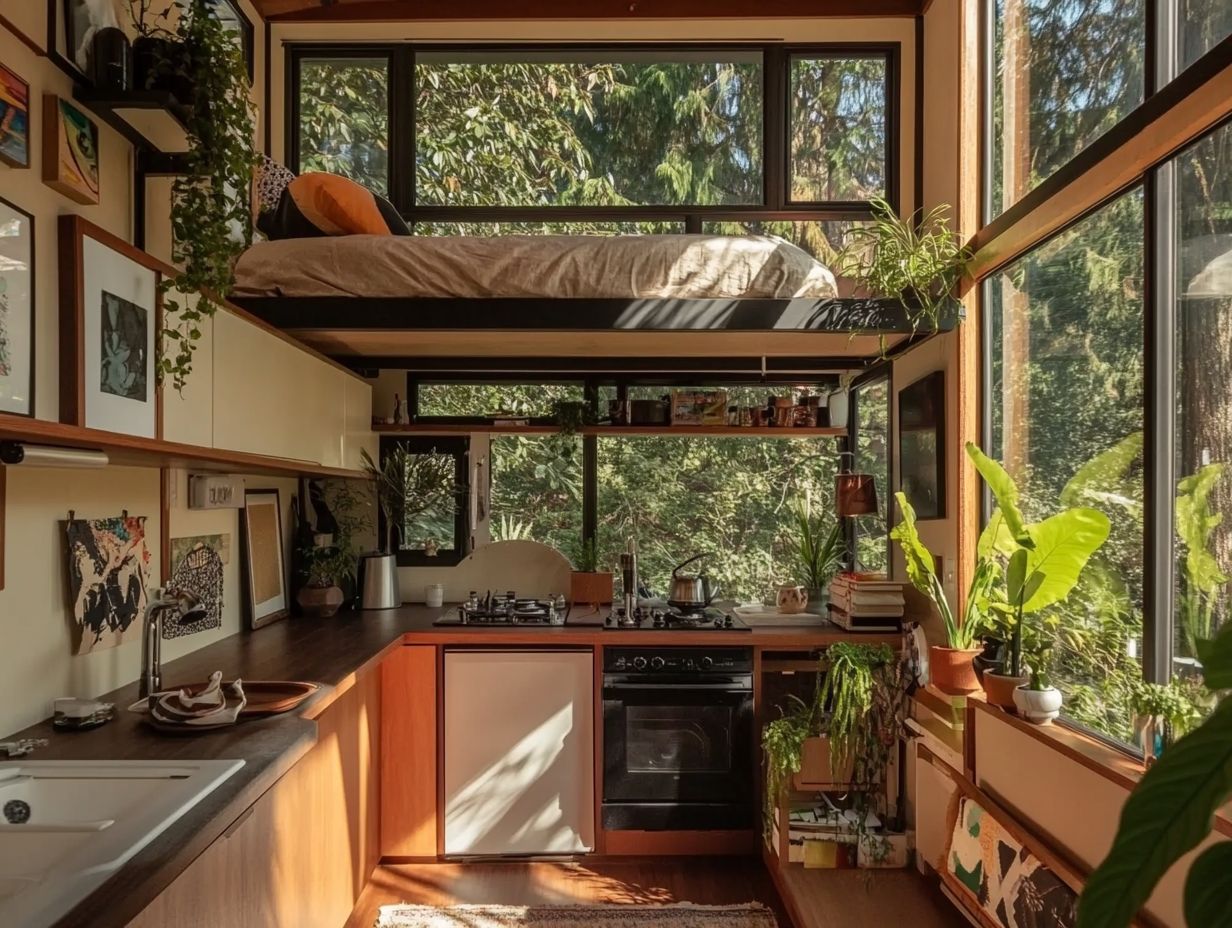
When building a tiny house, smart design tips and sustainable living practices can enhance functionality and comfort. Simple organization strategies create a living space that feels larger and more inviting.
Selecting eco-friendly materials like reclaimed wood, bamboo, or recycled metals helps the environment while achieving a pleasing design. Using furniture that serves more than one purpose, such as foldable tables or Murphy beds, maximizes your space and offers versatility for daily activities.
Thoughtful layout planning, including open floor designs, leads to an efficient home. These considerations can transform your tiny living experience into one that feels spacious and satisfying.
Is Tiny House Living Right for You?
Isn t it time you considered a simpler lifestyle? Determining if tiny house living is right for you requires careful consideration of several factors, including your lifestyle preferences and your yearning for freedom.
By understanding these elements, you can navigate your journey toward homeownership and create a fulfilling tiny living experience that resonates with your values.
Factors to Consider
When considering tiny house living, several factors warrant your attention: your emotional energy, your ability to adapt your lifestyle, and the significance of community in your life. These considerations can profoundly influence your decision to embrace a simpler way of living.
Your emotional energy dictates how you navigate downsizing and the discomfort of letting go of possessions. Your capacity for adaptability plays a crucial role, requiring a mindset shift that values experiences over belongings.
The need for community is equally important, as social connections are essential for well-being. Engaging in activities like Goat Yoga yoga practiced alongside goats can foster connections.
Balancing these elements allows you to weigh the rewards, like financial freedom and reduced stress, against challenges such as feelings of isolation or adjustments needed for living in tighter quarters.
Frequently Asked Questions
What is tiny house living?
Tiny house living refers to the lifestyle of living in a small, compact, and typically mobile home. It is a minimalist approach, focusing on reducing one’s carbon footprint and living simply.
What are some lessons learned from living in a tiny house?
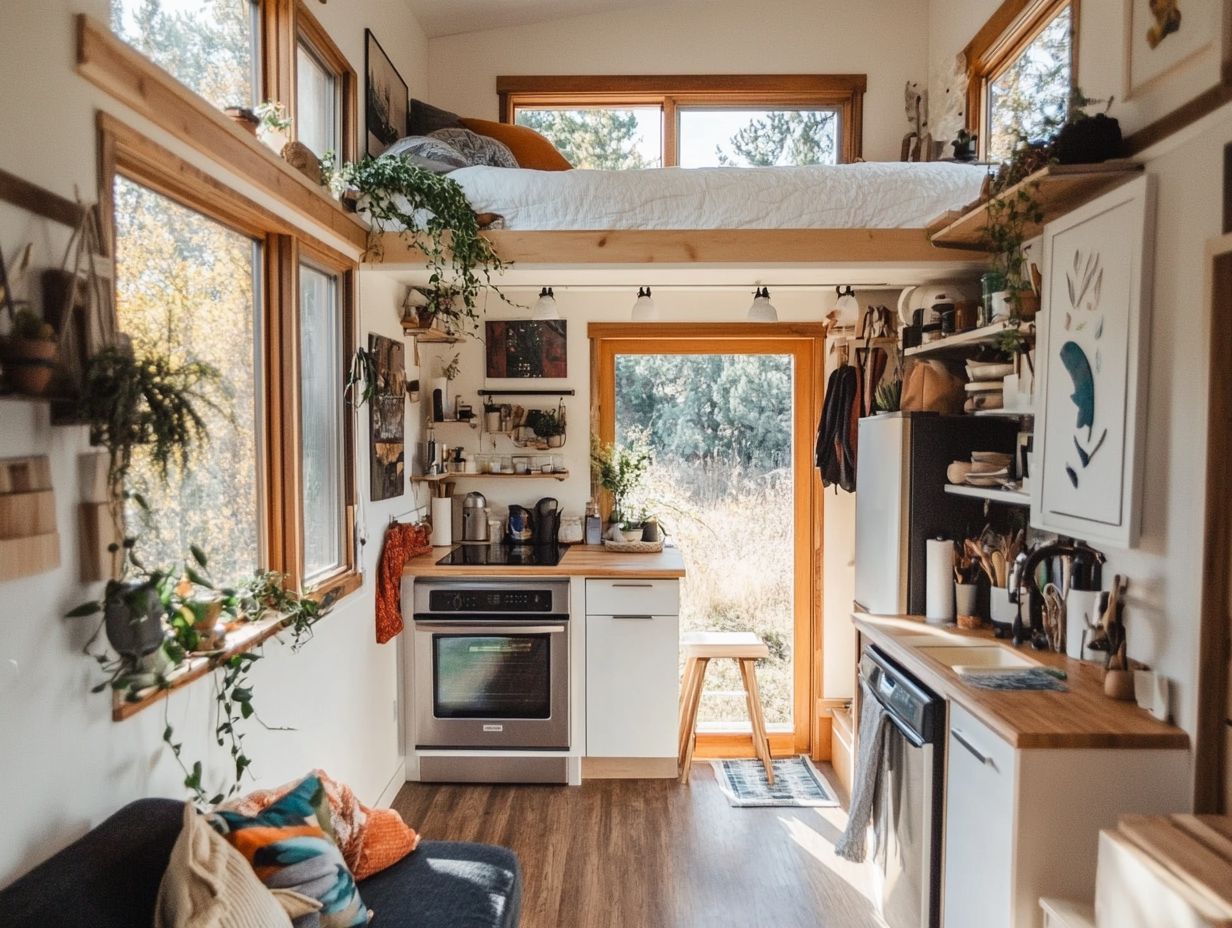
Living in a tiny house teaches you the importance of organization and decluttering. You learn to design your space intentionally and adapt to your surroundings.
What are the benefits of tiny house living?
Tiny House living brings many advantages. These include lower living costs, a smaller environmental footprint, and the freedom to move around easily.
This lifestyle promotes a simpler way of living. It opens up opportunities for vacation planning and enjoying more outdoor space.
What are some challenges of living in a tiny house?
Living in a Tiny House can be challenging. You may face limited storage space and regular maintenance needs.
It s essential to manage your space creatively. With the right approach, you can thrive in even 350 or 600 square feet.
Can I build my own tiny house?
Yes, building your own Tiny House is possible. Just make sure to check and follow your local building codes.
Research and planning are crucial before you start. Explore resources like Pinterest for inspiration.
Is tiny house living for everyone?
No, tiny house living isn’t suitable for everyone. It requires a willingness to live with less and embrace sacrifices.
Think carefully about whether this lifestyle suits you. Decide if you re ready to downsize and enjoy a Tiny House.
Ready to explore the world of tiny house living? Start planning your tiny house journey today!

